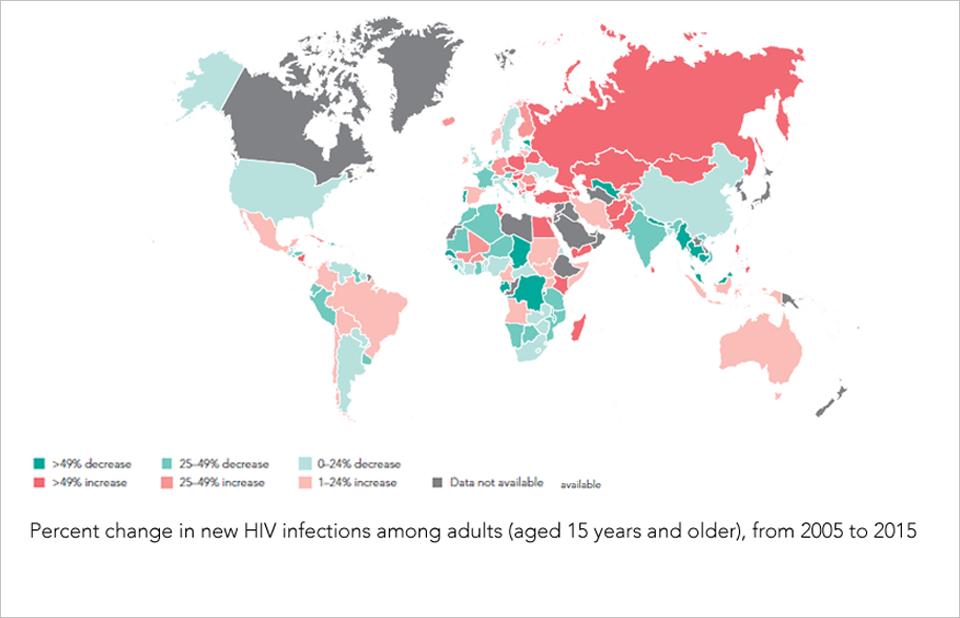

HIV among people who use drugs
People who inject drugs are around 28 times more likely to be living with HIV than the general population.

HIV in emergency situations
How HIV transmission is affected by emergencies is complicated and includes an interconnected mixture of exacerbating and diminishing vulnerability and risk factors that are context-specific.

Women and HIV
HIV is the leading cause of death among women aged 30–49 globally (hundred thousands)

Challenges faced by sex workers
Female sex workers face multiple challenges in life, from violence to criminalization to increased HIV prevalence.

The human and economic cost of homophobia
Cost of homophobia as a share of GDP and in value, per region, per year

Life expectancy of people living with HIV
Expected impact of HIV treatment on a survival of a 20-year-old person living with HIV in a high-income country

Prevention of mother-to-child HIV transmission
Percent of women receiving antiretroviral medicines to prevent vertical transmission, by region, 2010-2015

New HIV infections among adults
Percent change in new HIV infections among adults (aged 15 years and older), from 2005 to 2015

36.7 million people are living with HIV around the world
36.7 million people are living with HIV globally... 40% do not know they are HIV positive.

Knowledge about HIV among young people
Correct and comprehensive knowledge about HIV among young people (aged 15-24 years), sub-Saharan Africa
